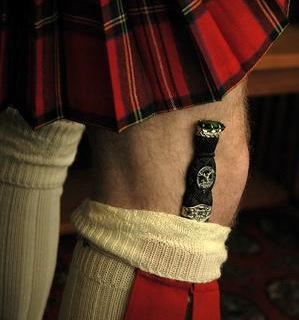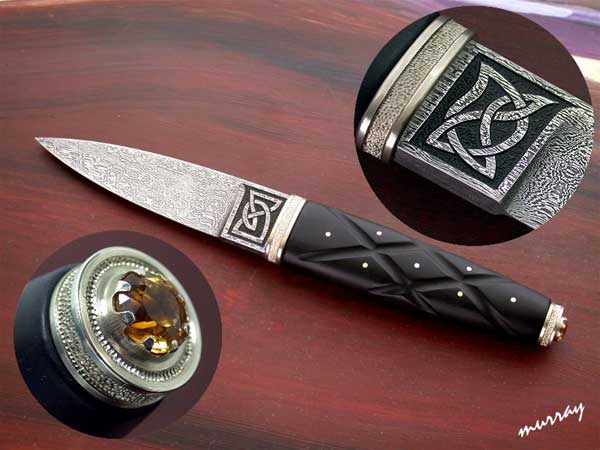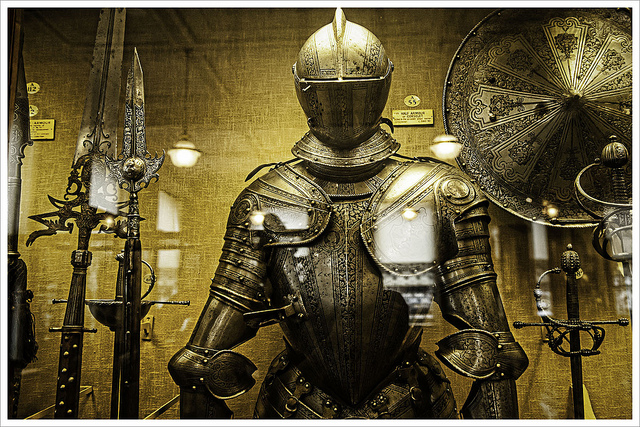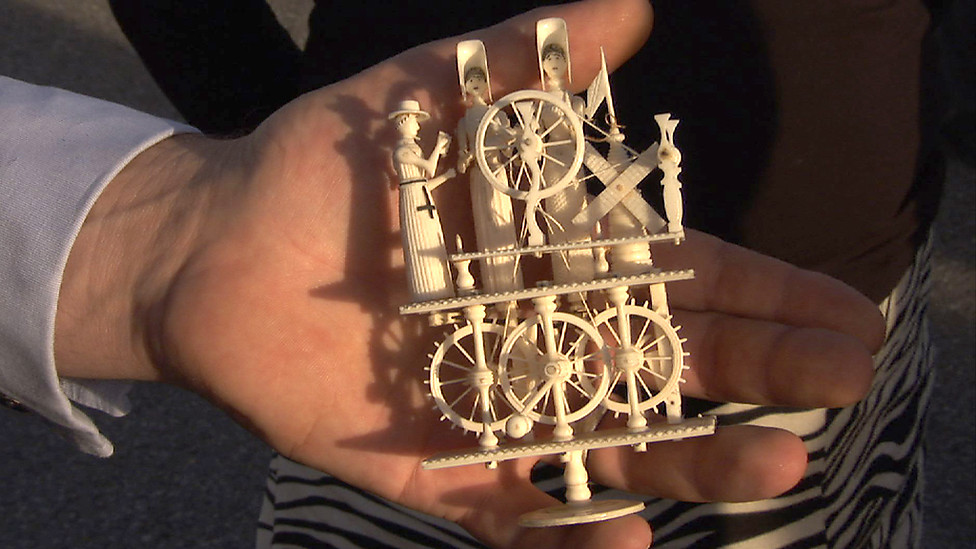 The Sgian Dubh is the small ornamental knife traditionally worn in the top of the stocking by the Highlander.
The Sgian Dubh is the small ornamental knife traditionally worn in the top of the stocking by the Highlander.
The name is Gaelic. The word sgian means knife or dagger and dubh means black, referring to the colour of the handle, which was made from black hardwood. Various spellings of the word are recorded in different books, including skean, skian and skein. The word dubh can also be spelt dhu.
It is also suggested that black means secret or hidden which is based on the stories and theories surrounding the knife’s origin.
The flat edge is normally worn in the right stocking by right handed people.
The sgian dubh we see today is a mixture of history, myth and misinterpretation. Sgian in Gaelic means knife, the dubh part means black. Thus you get black knife. The black refers to the fact it was a hidden knife or a concealed weapon.
 Today we see extremely ornate handles, scabbards covered in silver, pewter or gold. Check close as the handle may be plain old plastic. The blades have no edge, some I have seen lately would not spread butter as they are stamped, blunt pointed, blunt edged metal and you can’t be sure what the metal is. Why the ornate scabbards? Once you tuck it into the hose top you can’t see any of it but the hilt or handle.
Today we see extremely ornate handles, scabbards covered in silver, pewter or gold. Check close as the handle may be plain old plastic. The blades have no edge, some I have seen lately would not spread butter as they are stamped, blunt pointed, blunt edged metal and you can’t be sure what the metal is. Why the ornate scabbards? Once you tuck it into the hose top you can’t see any of it but the hilt or handle.
The knife we see today is not the sgian achlais of olden days. The term sgian achlais means “arm pit dagger” or sleeve dagger which was also called “Mattucashlass”. In 1810 a man by the name of William Duane wrote a military dictionary, in it he describes the mattucashlass as an ancient Scottish weapon hidden in the sleeve, used for close combat when a dagger is most useful. In the year 1802 George Alexander in his work “A Topography of Great Britian” describes this same sleeve dagger. In 1881 Thomas Wilhelm in his work “ A Military Dictionary and Gazetteer” describes this sleeve dagger.
In the “History of Highland Dress” written by John Telfer Dunbar in 1962 he also describes the sleeve dagger. In 1814 Sir Walter Scott became famous as an author with his book “Waverly”. In this work Scott also mentions the sgian achlais or armpit dagger. The key word in all this is the word dagger. As stated before sgian is Gaelic for knife, the word in Gaelic for dagger is Biodag, pronounced Beedak. So we should have a Biodag dubh. All old accounts called the weapon a dagger not a knife. A dagger is described as a double edge weapon for stabbing or thrusting in close combat. A knife is described as a single edged utility tool for skinning game, cutting bread, etc! etc!. The knife can also be used as a weapon if worst comes to worst.
The sgian dubh is said to have been part of a set of knives used by servants to clean, skin, dress the meat after the Lord of the manor and his party had killed the game. One knife was long and heavy bladed for butchering the game, the other had a blade from 3 to 4 inches in length, this was for skinning the game. This skinning knife had a handle of stag antler or wood. Sometimes bog oak was used on the handle of these skinning knives. Bog oak is dark brown to black in color.
The history of taking the hidden weapon out of concealment and placing in the hose top or boot top to show your host you meant no ill will is correct. But it was a hidden dagger not the present sgian dubh. The present sgian dubh is most likely a Victorian idea. During this time many ideas of what was correct Scottish dress came into being.
Note: The skinning knife mentioned above would have a straight single edged
blade, or a clipped pointed blade like a small bowie knife.











